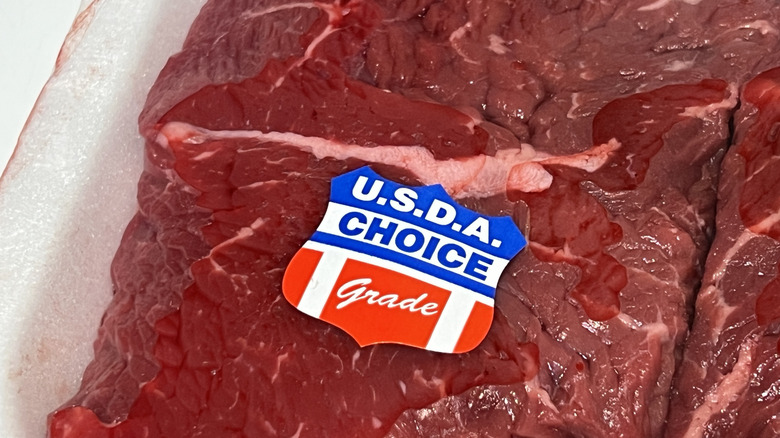The Cheaper Prime Rib Swap Alton Brown Prefers
If you're making ribs for a special occasion dinner, it's tempting to reach for the USDA prime. After all, ribs are a lot of work. You want high-quality meat, right? Not necessarily — at least, according to author, director, and "Good Eats" host Alton Brown. Brown can certainly afford prime rib, but the Food Network-turned-Netflix star prefers choice. "I like choice," Brown told Tasting Table in December 2024. "I think it's meatier."
Just to clarify: The term "prime ribs" has two different meanings. "Prime ribs" could refer to a specific cut. It's short for "primal ribs." But prime is also a USDA grade for beef. Most customers believe prime beef is higher quality than other USDA grades, like choice or select. But many pros — including Brown — disagree. Here, we're talking about the grade.
USDA grades are based on marbling, which refers to the way fat is distributed through the meat. Historically, fine marbling was the gold standard. Meat with fine marbling has small bits of fat evenly distributed throughout the muscle: Think of the distinctive dappled patterning on Wagyu beef. But, while those bits of fat may be small, fine marbling usually means the meat is fattier overall.
Why Prime isn't always best
Critics say that the grading system is outdated. Nowadays, chefs recognize that fine marbling isn't the be-all-and-end-all when it comes to quality. Other factors, like the cow's breed and diet, impact flavor. Across cultures, fine marbling isn't always considered the gold standard, and many folks simply prefer more flavorful meat.
However, many farmers only focus on marbling while skimping on flavor. Even if the flavor is sub-par, they'll still get that coveted USDA prime label. The grades shown on supermarket packaging don't tell the whole story, either. While supermarket beef is marked with a USDA shield identifying the three main grades, the USDA divides Prime into three additional grades. Most meat sold in the United States has "moderately abundant" marbling, which means it barely meets the mark for Prime.
Thanks to genetic advancements, fresh farming techniques, and the rise of grass-fed beef, USDA choice meat tastes better than it used to. With grocery prices on the rise, it's good to know that you can save without skimping on quality. But how do you get the best bang for your buck? If you see meat labeled "High Choice," it's a good bet. It's not an official government label, but it does indicate high-quality meat. Of course, personal preference plays a role, too: If you get the opportunity, sampling different breeds can help you identify your own personal preferences.
Static Media owns and operates both The Takeout and Tasting Table.

